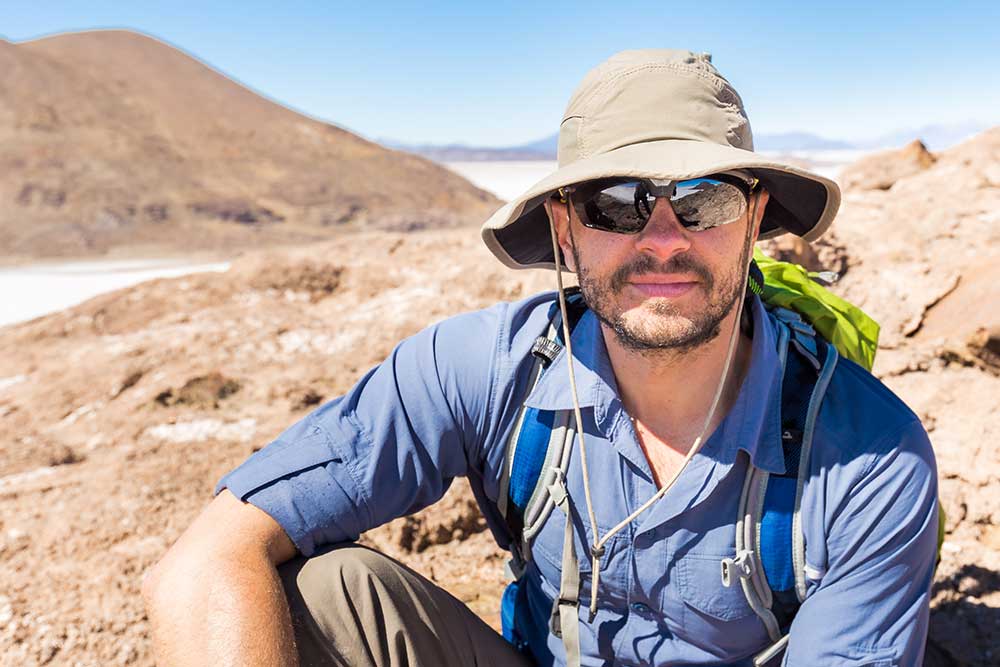All Categories
Featured
Table of Contents
Marine Geophysical Surveying - in Yangebup Oz 2022

The main model for the radial structure of the interior of the Earth is the initial reference Earth model (PREM). Some parts of this design have actually been updated by current findings in mineral physics (see post-perovskite) and supplemented by seismic tomography. The mantle is mainly composed of silicates, and the boundaries between layers of the mantle are constant with stage shifts.

This makes plate tectonics possible. Schematic of Earth's magnetosphere. The solar wind Circulations from left to. If a planet's electromagnetic field is strong enough, its interaction with the solar wind forms a magnetosphere. Early area probes drawn up the gross measurements of the Earth's magnetic field, which extends about 10 Earth radii towards the Sun.
Inside the magnetosphere, there are reasonably thick areas of solar wind particles called the Van Allen radiation belts. Geophysical measurements are typically at a specific time and place.
Geoscientist - College Of Science in Shenton Park Australia 2020
A three-dimensional position is determined utilizing messages from 4 or more visible satellites and referred to the 1980 Geodetic Recommendation System. An option, optical astronomy, integrates astronomical coordinates and the regional gravity vector to get geodetic collaborates. This approach just supplies the position in two collaborates and is harder to use than GPS.
Relative positions of two or more points can be figured out using very-long-baseline interferometry. Gravity measurements entered into geodesy because they were required to related measurements at the surface of the Earth to the reference coordinate system. Gravity measurements on land can be made using gravimeters deployed either on the surface area or in helicopter flyovers.
, which are studied through geophysics and area physics.
What Is Geophysics? in Casaurina WA 2023

Because geophysics is worried with the shape of the Earth, and by extension the mapping of functions around and in the planet, geophysical measurements include high precision GPS measurements. As soon as the geophysical measurements have been processed and inverted, the analyzed results are plotted utilizing GIS.
Many geophysics companies have created in-house geophysics programs that pre-date Arc, GIS and Geo, Soft in order to meet the visualization requirements of a geophysical dataset. Exploration geophysics is used geophysics that often uses remote sensing platforms such as; satellites, airplane, ships, boats, rovers, drones, borehole noticing equipment, and seismic receivers.
Aeromagnetic data (airplane gathered magnetic data) gathered utilizing conventional fixed-wing airplane platforms must be remedied for electromagnetic eddy currents that are developed as the aircraft moves through Earth's electromagnetic field. There are likewise corrections associated with changes in determined potential field intensity as the Earth turns, as the Earth orbits the Sun, and as the moon orbits the Earth.
Services Geophysical in Alfred Cove Oz 2020
Signal processing includes the correction of time-series information for unwanted noise or mistakes introduced by the measurement platform, such as aircraft vibrations in gravity data. It likewise includes the decrease of sources of noise, such as diurnal corrections in magnetic information. In seismic data, electro-magnetic data, and gravity information, processing continues after mistake corrections to consist of computational geophysics which result in the last analysis of the geophysical data into a geological analysis of the geophysical measurements Geophysics emerged as a different discipline just in the 19th century, from the crossway of physical geography, geology, astronomy, meteorology, and physics.
The magnetic compass existed in China back as far as the 4th century BC. It was not up until good steel needles could be forged that compasses were utilized for navigation at sea; prior to that, they could not maintain their magnetism long enough to be useful.
By looking at which of eight toads had the ball, one could identify the direction of the earthquake.'s (1600 ), a report of a series of careful experiments in magnetism.
Geophysical Method - An Overview in Shoalwater Oz 2022
In 1687 Isaac Newton released his, which not only laid the foundations for classical mechanics and gravitation Likewise described a variety of geophysical phenomena such as the tides and the precession of the equinox. The first seismometer, an instrument capable of keeping a constant record of seismic activity, was built by James Forbes in 1844. Geochemistry, Geophysics, Geosystems. National Aeronautics and Area Administration. Obtained 13 November 2018.
Leipzig. Berlin (Gebruder Borntraeger). Runcorn, S.K, (editor-in-chief), 1967, International dictionary of geophysics:. Pergamon, Oxford, 2 volumes, 1,728 pp., 730 fig Geophysics, 1970, Encyclopaedia Britannica, Vol. 10, p. 202-202 Ross 1995, pp. 236242 Shearer, Peter M. (2009 ). Introduction to seismology (second ed.). Cambridge: Cambridge University Press. ISBN 9780521708425. Stphane, Sainson (2017 ).
Table of Contents
Latest Posts
How To Become A Geophysicist in Mount Claremont Oz 2023
Geophysical Survey Next Step In Carbon Storage Study in Brookdale Western Australia 2023
Geophysical Investigations in Calista Western Australia 2022
More
Latest Posts
How To Become A Geophysicist in Mount Claremont Oz 2023
Geophysical Survey Next Step In Carbon Storage Study in Brookdale Western Australia 2023
Geophysical Investigations in Calista Western Australia 2022